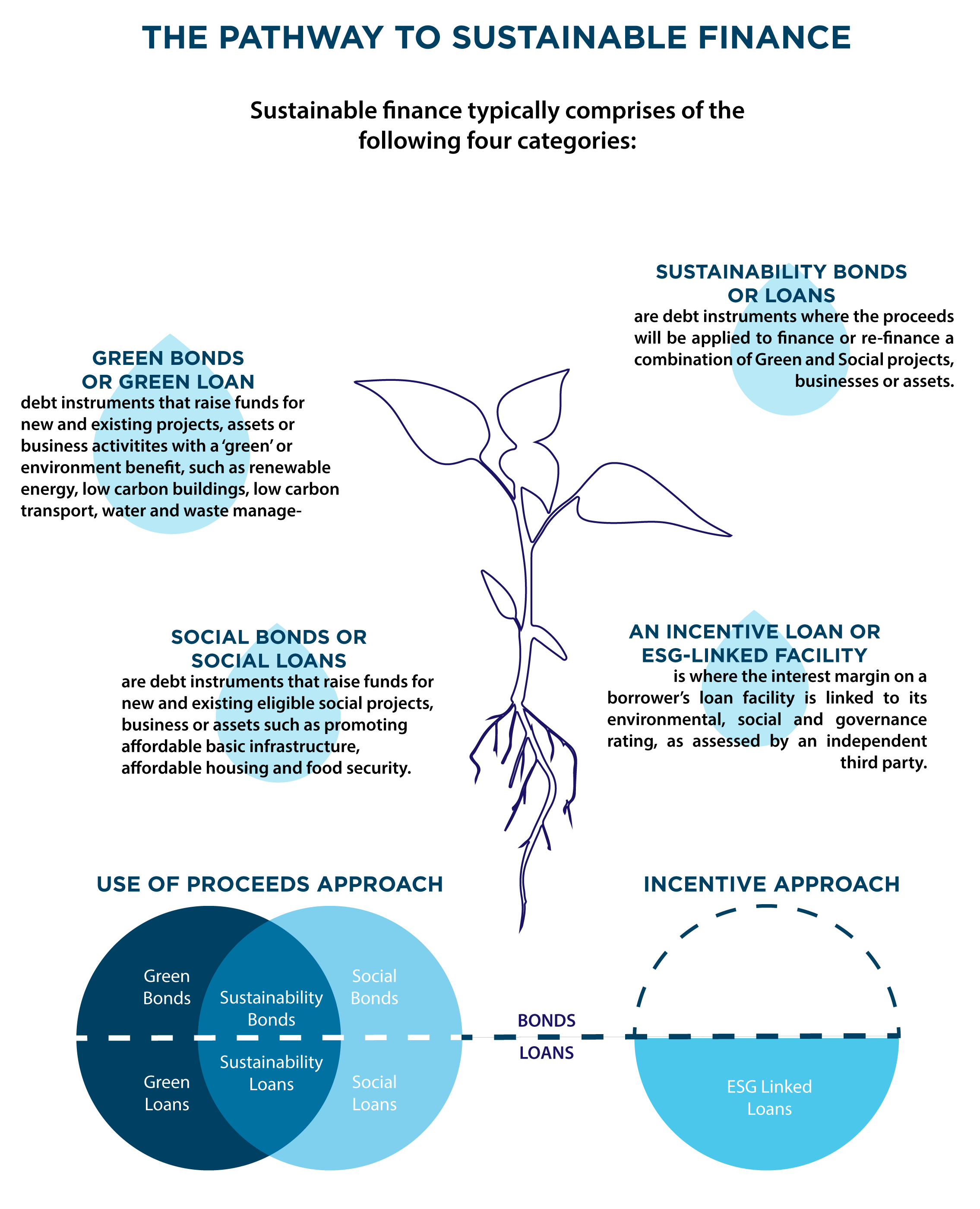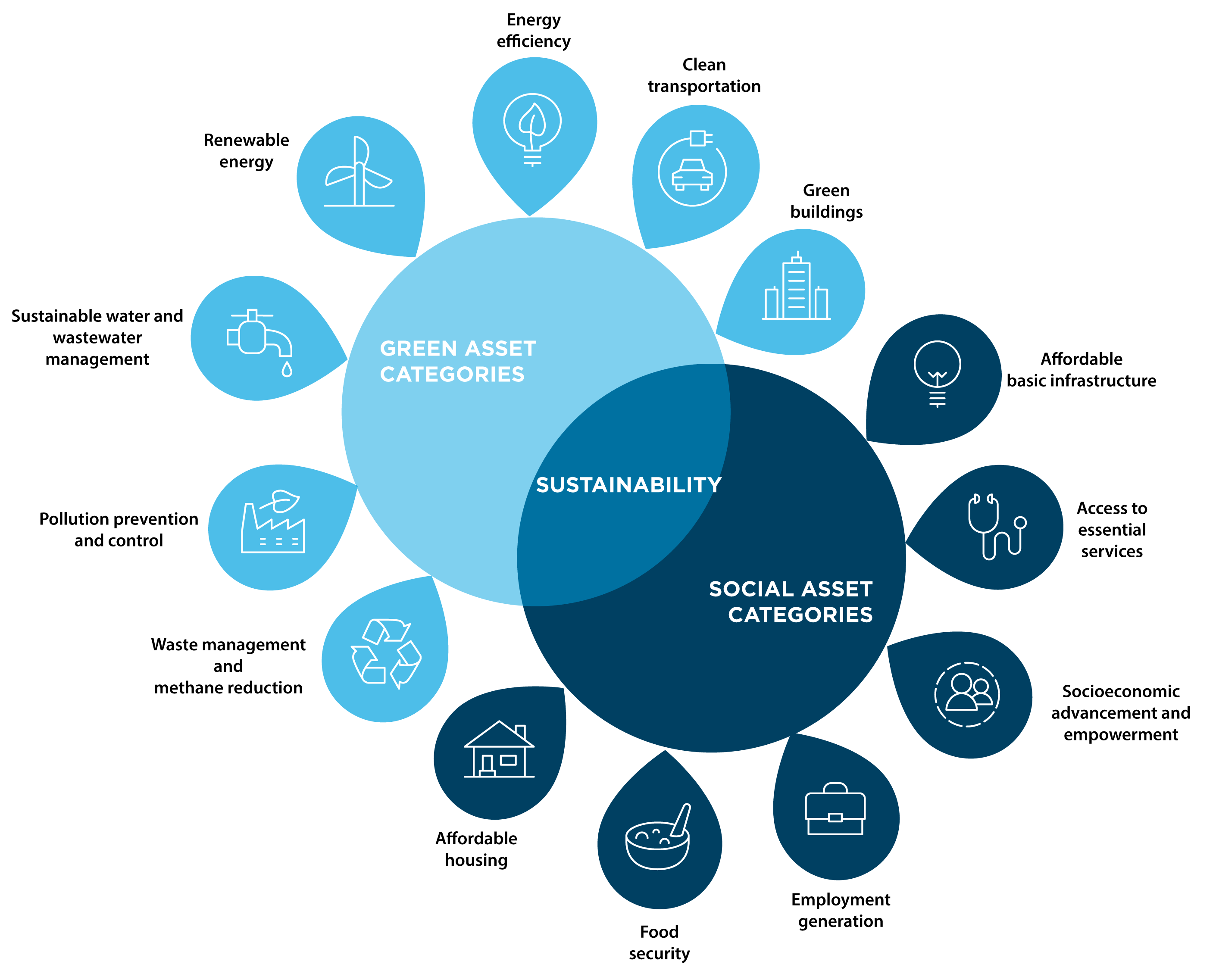-
As the world works towards a myriad of sustainable goals and ambitions, business functions such as finance must shift to suit the needs of organisations and governments.
Sustainable finance is a growing trend amongst businesses but it can be a complicated service to understand as it is made up of many components.
"A financial centre ensures and improves economic efficiency, prosperity, and economic competitiveness both today and in the long-term.”
The term refers to any form of financial service integrating environmental, social and governance (ESG) criteria into the business or investment decisions for the lasting benefit of both clients and society at large.
A sustainable financial centre is a financial marketplace that, as a whole, contributes to sustainable development and value creation in economic, environmental and social terms.
In other words, a financial centre ensures and improves economic efficiency, prosperity and economic competitiveness both today and in the long-term, while contributing to protecting and restoring ecological systems and enhancing cultural diversity and social wellbeing.
{CF_IMAGE}
For each of these categories, there are individual attributes for borrowers, investors and lenders.
These loans and bonds can be largely defined within two key structures:
Incentive loan approach
This is a newer structure which has primarily been utilised for loan facilities (rather than bonds). The loan margin is tied to the issuer achieving a certain Environmental, Social, Governance score across a number of targets, as assessed by an independent third party such as Olam’s sustainability-linked club loan facility.
Use of proceeds approach
There are two instruments here:
- Bonds - what most people think of when they use the phrase “green bond”. Can be used for a green, social or sustainability bond issuance. The key factor is proceeds of the bond are tied to financing or refinancing certain underlying assets of the issuer, which can be classified as eligible green or social assets. A recent example is ANZ’s Sustainable Development Goals Bond issuance.
- Loans – a very similar approach to bonds, except the focus is on proceeds of a loan borrowed, rather than bond issued such as Contact Energy’s green loan, the first debt to be issued following their drafting of a Green Borrowing Programme.
Use of proceeds could include any of the categories below or those aligned to the United Nations Sustainable Development Goals.
{CF_IMAGE}
{CF_VIDEO}
The rise of green investments
There are various factors driving green investments and sustainable finance such as
Strategy & future financial performances - sustainability, social and environmental governance is being increasingly integrated into corporate business strategies. These strategies are supporting new investment opportunities and mitigating various business risks including climate change. It is increasingly cited as an indication of future outperformance in comparison to peers that do not have sustainability integrated into their strategies.
Regulation - governments and regulators are implementing and reviewing policies to encourage sustainable development and the transition to low carbon economies. This is creating incentives for businesses to place resources in sustainable investments within their supply chains and report on progress.
Reputation - there is an increasing expectation from wide-ranging stakeholders and customers to integrate sustainability into business strategy. Various regulators are requiring voluntary or mandatory disclosure on social and environmental performance. It is also demonstrating commitment and provides an avenue for transparent market reporting of sustainability performance and alignment to the United Nations Sustainable Development Goals. Two key standards investment institutions have adopted are United Nations Global Compact Principles and the United Nations Principles for Responsible Investments.
Although complex, sustainable finance is an area of growth and obligation businesses must begin to focus on - or risk being left behind with all the costs that implies.
Bruce McKenzie is Associate Director, Research & Analysis, Food, Beverage and Agribusiness, ANZ
The views and opinions expressed in this communication are those of the author and may not necessarily state or reflect those of ANZ.
-
-
-
anzcomau:Bluenotes/social-and-economic-sustainability,anzcomau:Bluenotes/business-finance
Financing a sustainable future
2019-01-07
/content/dam/anzcomau/bluenotes/images/articles/2019/January/McKenzieSusFinance_banner.jpg
EDITOR'S PICKS
-
Green finance offers a huge opportunity for banks willing to get involved in the burgeoning sector.
30 October 2018 -
Bank seeks to balance the social and economic impacts of its decisions.
31 August 2018


